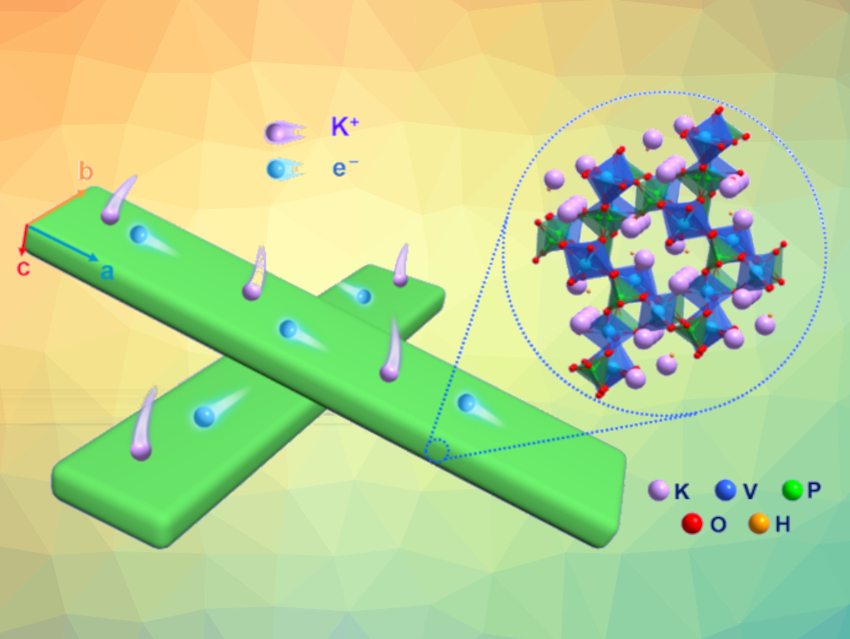Potassium-ion batteries (PIBs) could be a useful alternative to commercial lithium-ion batteries in the field of large-scale energy storage due to the abundance of potassium resources and the low electrochemical potential. However, the large ionic radius of K+ results in a large lattice strain and large volume variations, which hampers the practical application of PIBs.
Xiaosi Zhou, Nanjing Normal University, China, and colleagues have developed a one-step solvothermal method for the production of a low-strain, phosphate-based PIB cathode material, i.e., K3(VO)(HV2O3)(PO4)2(HPO4), or KVP, with a “nanoruler” shape (pictured schematically in green). The team mixed VOSO4, K3PO4·3H2O, and K2HPO4·3H2O in ethylene glycol and water and heated the mixture to 160 °C. They tailored the size and morphology of the KVP nanorulers by tuning the volume ratio of ethylene glycol and water in the precursor solution.
X-ray diffraction analysis showed that KVP has a small cell volume change (2.7 %) during repeated K+ extraction/insertion processes. In addition, fast K+ transport kinetics were confirmed by electrochemical tests and density functional theory (DFT) calculations. The KVP nanorulers provide a high average working voltage (4.11 V) and good cyclic performance (92.1 % capacity retention after 2,500 cycles) and rate properties (54.4 mAh g–1 at 5 A g–1).
- A Novel Low‐Strain Phosphate Cathode for High‐Rate and Ultralong Cycle‐Life Potassium‐Ion Batteries,
Xiaosi Zhou, Jiaying Liao, Cailing Chen, Qiao Hu, Yichen Du, Yanan He, Yifan Xu, Zhuangzhuang Zhang,
Angew. Chem. Int. Ed. 2021.
https://doi.org/10.1002/anie.202112183



